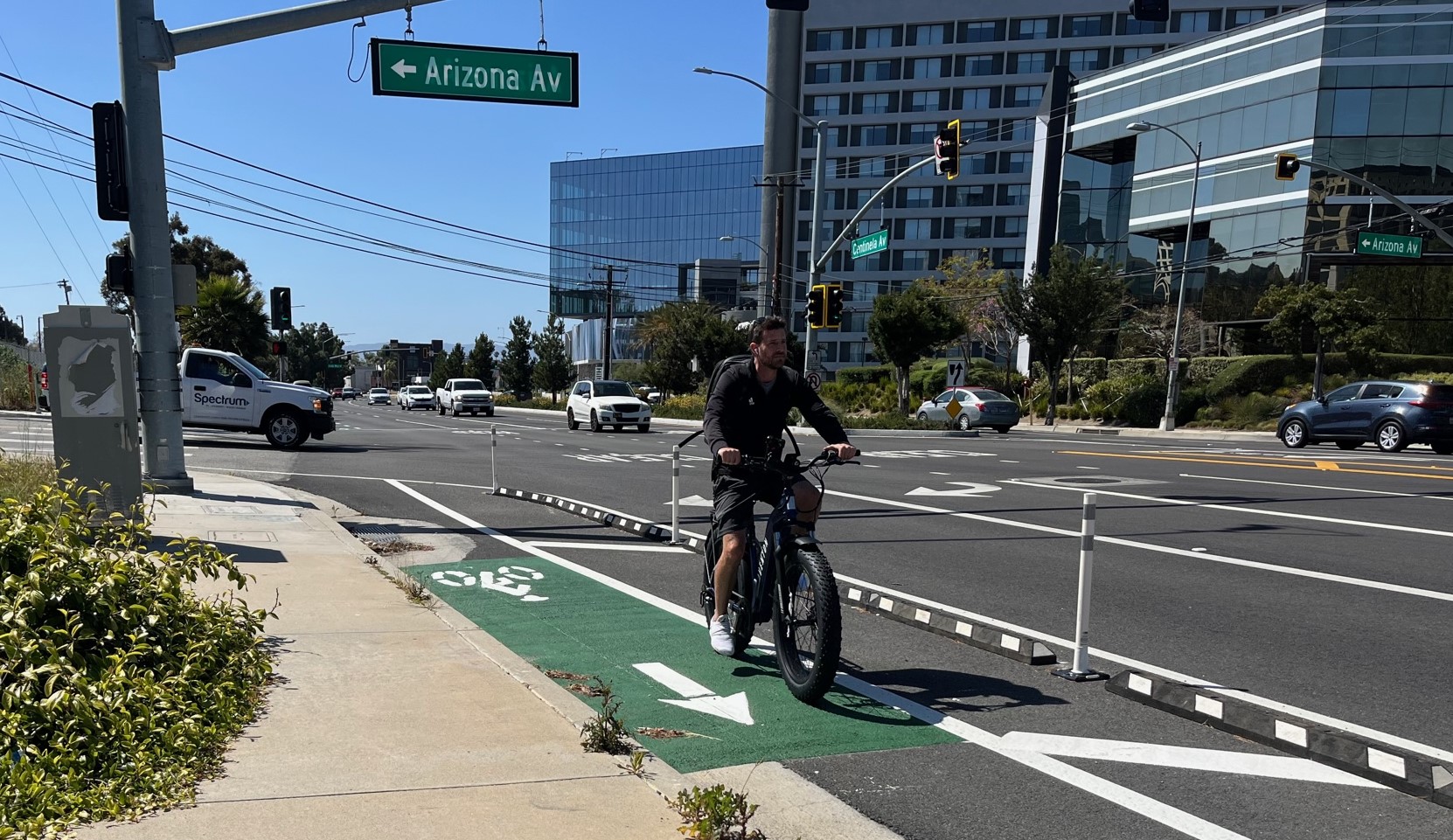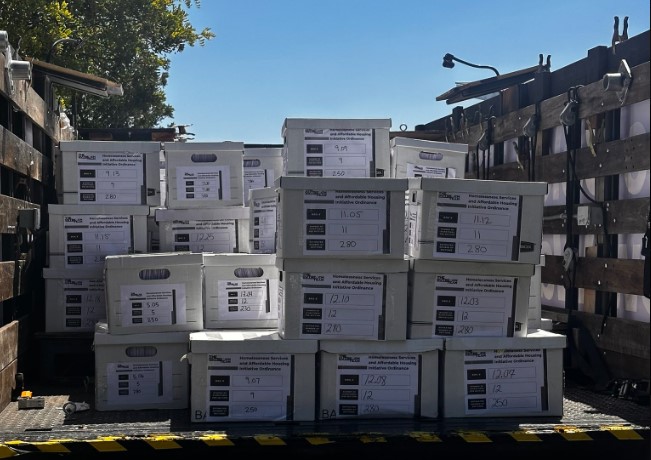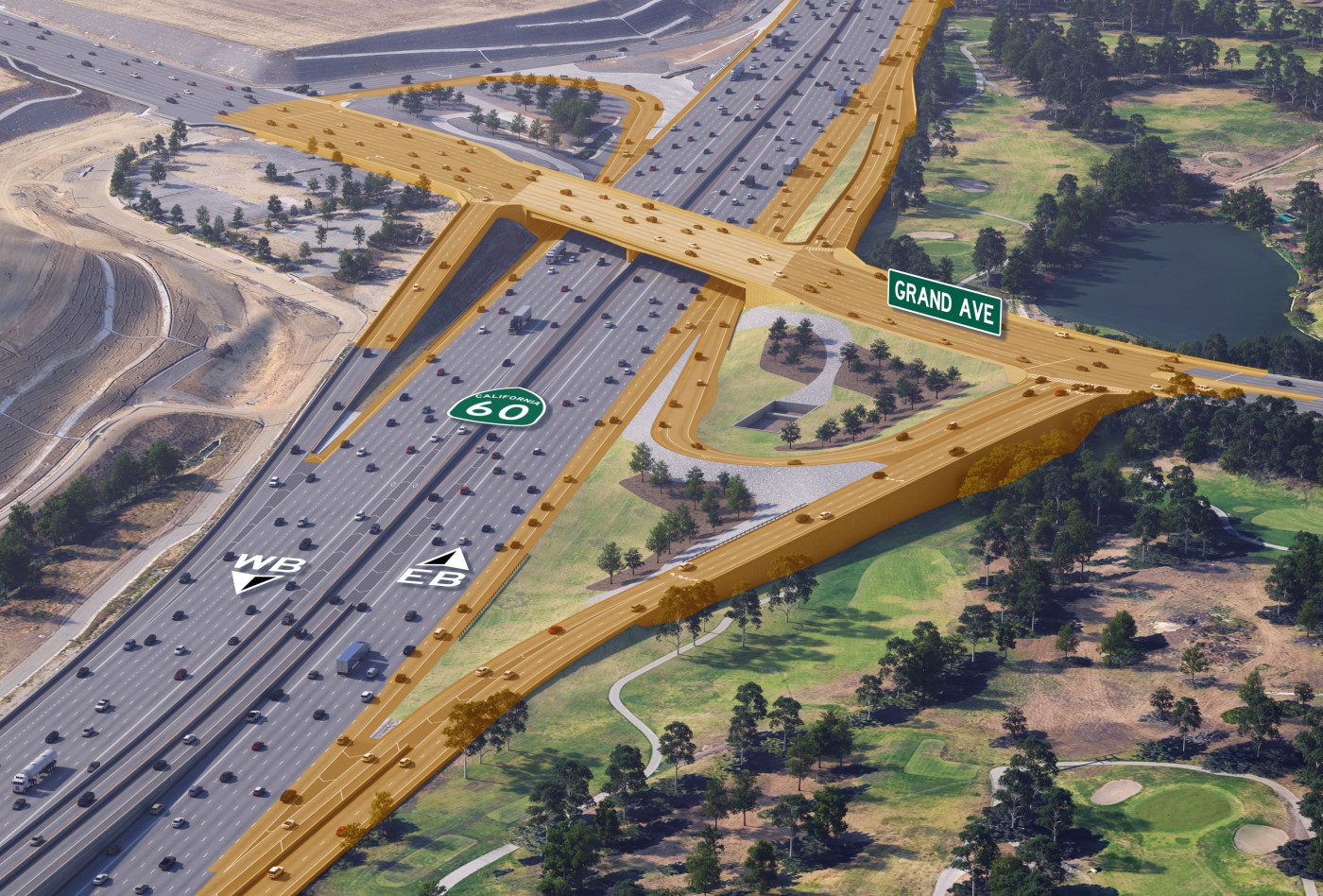Metro’s Excessive West Santa Ana Branch Cost Estimates Are for Wrong Type of Project
11:56 AM PDT on May 16, 2018
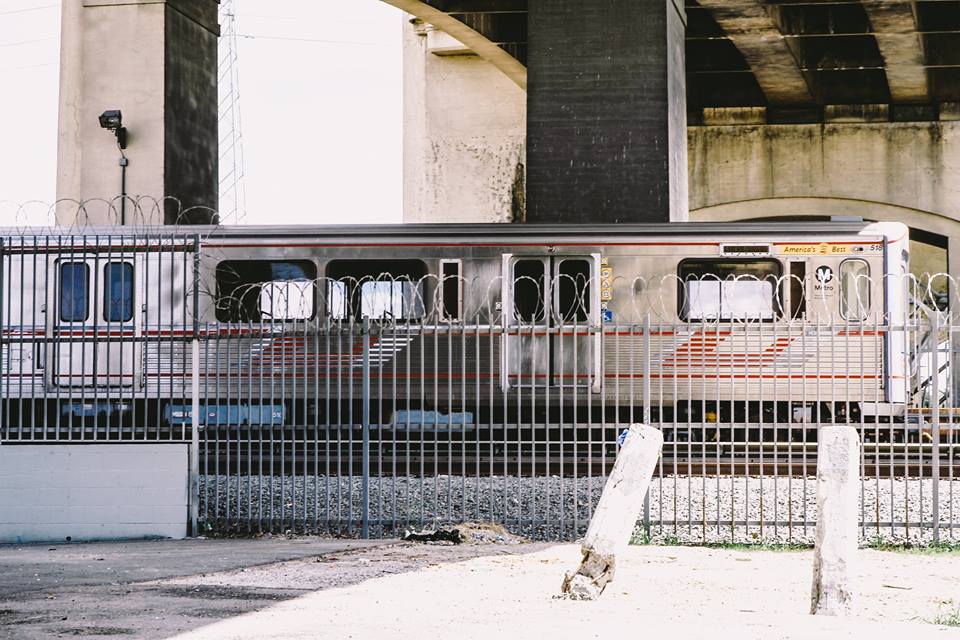
Metro is using the wrong estimates to refuse to evalutate HRT on the West Santa Ana Branch. An L.A. subway train on the trail tracks along the river, under the now-removed 6th Street bridge. Photo: Streetsblog/Rudick
Late Monday, Metro clarified its methodology for estimating the construction costs and dismissing a heavy rail alternative for the agency's planned West Santa Ana Branch transit project. It turns out that when Streetsblog called for surface heavy rail on the WSAB, Metro dismissed the proposal by citing costs for a different project: all-tunnel or all-elevated. Even with this dismissive manipulative apples-to-oranges comparison, Metro used inflated cost estimates.
The reasoning behind these excessive estimates was not included in the official staff report, but was later admitted in a comment posted on Metro's The Source:
Without the benefit of reengineering and redesigning the project for heavy rail (HRT), Metro took the most recent costs we have for Metro tunneling projects. For aerial we applied the industry norm that aerial is approximately two-thirds the cost of tunneling. We then assumed that all 20 miles of WSAB would need to be grade separated, hence the range — all aerial or all underground.
We assumed that a heavy rail alternative could not cross intersections at street level due to safety and other potential impacts. There are about 83 intersections along the entire 20-mile alignment, meaning that it would be difficult to run the line at street level for any length.
We see what you did there.
An analogous exchange might be something like Streetsblog asking "why don't you look into buying a good quality bicycle?" and Metro responding "we can't buy a bicycle because it costs way too much," then Metro admitting "those costs are for luxury cars."
Metro is citing the cost of a 20-mile tunnel. Nobody has remotely suggested this. Including an excessive full-tunnel cost makes no sense, other than to mislead people.
Though that in itself is wrong, when Metro cites its unasked-for 20-mile tunnel cost, they're putting their thumbs on the scale. Metro's WSAB estimate adds an extra 28 percent to their current HRT Purple Line extension phase 1 per-mile cost. Per a 2018 Metro The Source post comparing tunneling costs, Metro is building the PLE1 for $720 million per mile ("3.9 miles long and has a budget of $2.82 billion"), but instead of using that figure for tunneling, Metro estimates a WSAB tunnel would cost $1 billion per mile. Even compared to the cost of tunneling the Regional Connector LRT subway ($920 million per mile - 1.9 miles long for $1.75 billion), Metro has added eight percent.
But why is anyone talking about a 20-mile long tunnel? (Other than Metro. Who brought it up first. When they were being dismissive.)
Let's take a look at Metro's other estimate. Metro is asserting that an "all aerial" WSAB HRT would 1) cost $12.3 billion dollars and 2) that elevating the entire line is necessary.
Metro admits that its $12.3 billion estimate is based on the "industry norm" and that aerial structures cost "two-thirds the cost of tunneling" - though, as explained above, Metro has inflated its tunneling estimate.
A $667 million per mile estimate appears excessive, compared to Hawaii's $500 million per mile for elevated rail.
Metro assumes that the project would be "all aerial" because HRT "could not cross intersections at street level."
(We agree that HRT would need quite a bit of grade separation. Because it's faster and third-rail electrified, the public needs to be safe and the train needs to fly over many intersections or roads need to be diverted or lowered under the tracks. Options to make WSAB HRT work would probably include flyovers, street closures, and other measures. LRT would also need some of this, though, if it's going to be safe and effective.)
But HRT does run at-grade all over the world -- even third-rail-powered HRT like Metro's Red/Purple Line.
Cities do this with a variety of configurations. BART eliminated all grade crossings by closing roads and grade-separating tracks. They also fence off the right of way. Much of BART is elevated on aerial viaducts, but not everywhere. Go to Chicago, and you'll see third-rail-powered HRT lines that have grade crossings--they use swing gates and barriers to prevent people from wandering onto the tracks, with a short break in the third rail where it crosses the street. In New York, you'll find grade crossings on third-rail train lines on Long Island and in Westchester County. Go to London and you'll find the same.
In Boston, London, and New York (and other places), rail lines use dual-mode trains that have both third-rail shoes and overhead pantographs, and can draw power from either one. If third-rail grade crossings were really the issue, L.A. could attach overhead collectors to the existing subway trains, and switch from third-rail to overhead wire once above ground. The costs of this may not be trivial - though it's likely to cost less than the three multi-billion dollar tunnel alternatives that Metro is currently favoring.
These are called options.
Options are what transit agencies are supposed to look at when they do required environmental studies.
Metro's refusal to investigate legitimate WSAB HRT options didn't start with the latest staff report. One of the alternatives studied early on was low-speed MagLev. Low-speed MagLev is basically heavy rail that floats on magnets embedded in a guideway. Level street crossings are impossible with a MagLev, because there's no way cars can safely drive across the guideway. (The other "options" studied: a streetcar and bus rapid transit. Really.)
Why did SCAG and Metro include low-speed MagLev in its alternatives analysis, if, as Metro now says, an elevated guideway (which isn't even necessary for HRT) apparently automatically disqualifies a mode from consideration?
It sure looks like Metro determined in advance that it would build LRT on the WSAB, whether it made sense or not, and no matter what their studies showed. All the studies, all the public outreach now makes it look like the agency is just going through the motions of fulfilling environmental laws without actually weighing valid options.
Today and tomorrow, Metro board committees are considering narrowing down the WSAB options to three multi-billion-dollar LRT subway tunnels through downtown L.A.
The agency is doubling down on problematic, lawsuit-prone, low-capacity, expensive tunnel options - when a viable tunnel and right-of-way through downtown L.A. already exists along the river for the Red/Purple Line that they could simply connect to, if the trains used on the WSAB were compatible.
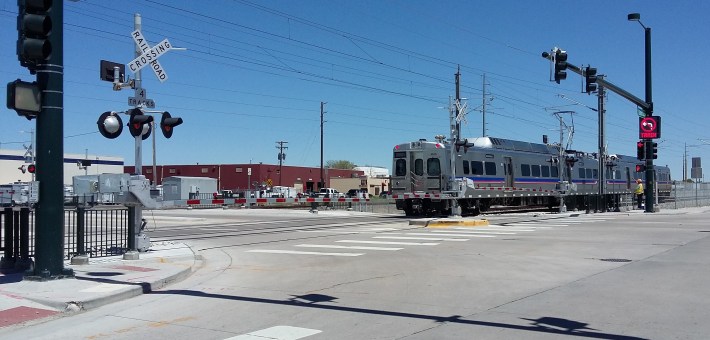
One sad irony is that, in Denver, Phil Washington's team oversaw construction of HRT to the airport, which cost $50 million per mile. The heavy rail, electric multiple units on some of the lines in Denver are essentially indistinguishable from what a Red/Purple Line surface extension would look like in L.A. Let's follow the example of Denver and build a line that will be faster and higher capacity - without costly tunneling.
We Streetsblog editors are big supporters of LRT where it's appropriate: where you've got some right of way, but large segments have to run on city streets. This means we supported Expo, the Eastside Gold Line, the Blue Line - all because LRT makes sense in those corridors. But LRT isn't the answer to every situation. Above all, Metro has an obligation to do legitimate studies and look at real options. Instead, on the WSAB they picked LRT, and then pushed to defend that decision without considering legitimate alternatives. Their latest bogus HRT cost estimates show they're still doing it.
If the WSAB line were compatible with the subway, the hardest portion of the alignment--the stretch through downtown to Union Station--is already built. This deserves some true analysis, not just throwing out bogus numbers.
Addendum - added 5/17: Some people (including some who work at Metro) have been saying to me (Joe) that it's "too late" in the process for SBLA to bring up this HRT alternative. We have a couple of responses to this:
First, in late April 2018, Metro added four new alternatives, each of which include new tunnels under downtown L.A. These tunnels range from ~2.1 miles to ~2.5 miles, with the shorter alternatives opposed by Little Tokyo stakeholders. Was it also "too late" for Metro to add roughly $2B worth of tunneling to a $4B project? A time when expected costs are going up is a good time to look into other options.
Also, we (Roger) didn't start bringing this alternative up a month ago. For many years, Roger has been meeting with Metro staff, commenting on studies, writing publicly about this - including at the Daily News in 2012. If Metro staff failed to study the WSAB HRT alternative, it's not because it wasn't brought to their attention until too late. It's because they chose to decide and defend, instead of actually evaluating options.
Stay in touch
Sign up for our free newsletter
More from Streetsblog Los Angeles
Eyes on the Street: Recent Centinela Bike Lanes in Culver City
The new partially-protected Centinela facility is a welcome safety upgrade for a stretch that long lacked any type of bikeway, but the area remains not all that bike-friendly
This Week In Livable Streets
Bike Month continues, Metro 91 Freeway widening, Destination Crenshaw, Culver City Bus, Santa Monica MANGo, Metro bike lockers, Metro Sepulveda Transit, and more
San Fernando Valley Bus/Bike Updates: G Line, Roscoe Bus Lanes, Laurel Canyon Bike Lanes
Short newly protected bike lane on Laurel Canyon Blvd, extensive NSFV bus improvements under construction this month, and scaled-back G Line plans should get that project under construction this summer
